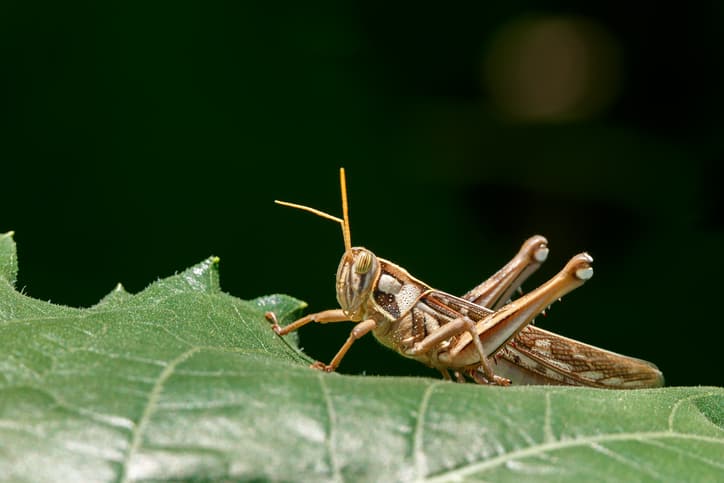Solutions to Locust Plague Are the Same as for COVID: Freedom and Technology

Photo Credit: Getty
 As nations around the world have struggled to address COVID-19 and the economic shutdowns, desert locusts have wreaked havoc in Africa this year. For months, billions of these pests have migrated from remote deserts into populated regions of East Africa and into Asia, decimating crops and producing severe famines. In a single day, these massive locust swarms can consume as much food as 35 million people can eat in a day, resulting in severe food insecurity for more than 20 million people.
As nations around the world have struggled to address COVID-19 and the economic shutdowns, desert locusts have wreaked havoc in Africa this year. For months, billions of these pests have migrated from remote deserts into populated regions of East Africa and into Asia, decimating crops and producing severe famines. In a single day, these massive locust swarms can consume as much food as 35 million people can eat in a day, resulting in severe food insecurity for more than 20 million people.
MSN reports:
In Kenya alone, there are already more than three million people without enough food to eat. In the wider Horn of Africa—including countries such as Ethiopia and Somalia—that figure is close to 30 million.
Just as with COVID-19 and so many other challenges, manmade chemical technologies are the only hope to mitigate such crises, be they vaccines, disinfectants, pesticides, or whatever. And the wealth generated by market economies remains essential to the development, access, and deployment of such tools.
Unfortunately, many developing nations in Africa struggle under socialist and authoritarian regimes that make wealth generation and technological development nearly impossible. To top that off, left-wing groups—often funded by wealthy leftists overseas—fight solutions with political pressure and by spreading misinformation related to pesticides and other essential agricultural technologies.
As I have discussed before, Greenpeace and other groups have pushed pesticide bans and regulations regardless of their human toll or our ability to use them in relatively safe and targeted ways to protect human health and the environment.
Kenya, fortunately, has been able to deploy pesticides, reducing locust populations and mitigating the terrible impact there. Yet the locusts keep moving, and many other nations don’t have enough resources to access and deploy pesticides, which are essential to fighting the locusts. Efforts are underway to move limited pesticide supplies to areas where they’re most needed, which hopefully will succeed.
The World Health Organization (WHO) has been involved in trying to address the locust problem, but like its lackluster performance related to COVID-19, it has allowed the locust populations to get out of control. U.S. Ambassador and Permanent Representative to the United Nations Agencies for Food and Agriculture in Rome Kip Tom explains:
The problem runs deeper than bureaucratic inertia. Under the previous Director General, Graziano da Silva (2012-2019), the FAO [Food and Agriculture Organization] became increasingly politicized, transforming from a science-based development organization into a champion of agrarian “peasant” movements supported by well-funded NGOs that condemn trade as neo-colonialism and equate property rights with oppression.
Advanced under the banner of “agroecology,” this new approach rejects the 20th century agricultural technologies—including advanced biotech seed varieties, modern pesticides, and fertilizer—that undergird food security in every developed and successfully developing nation. In their place, the FAO’s agroecologists and their allies promote practices that are deemed more “culturally sensitive” and hold up “subsistence farming” as an ideal. But this endless cycle of back-breaking labor and low yield production keeps so much of the world mired in underdevelopment.
The WHO, like so many others, fails to see that the answer to all these problems relies on market-driven technological development and the freedom to access such tools.
On a positive note, Nature magazine reported on August 12 that scientists say they have discovered a pheromone that locusts emit that promotes them to swarm. If researchers can synthesize the chemical, it could be used to create baits to attract locusts to where they can be killed off.
Hopefully, such technologies will become a reality without regressive ideologies—particularly the anti-technology green movement—derailing them. In the meantime, pesticides remain the main line of defense—as long as communities have the freedom and resources to access and deploy them.